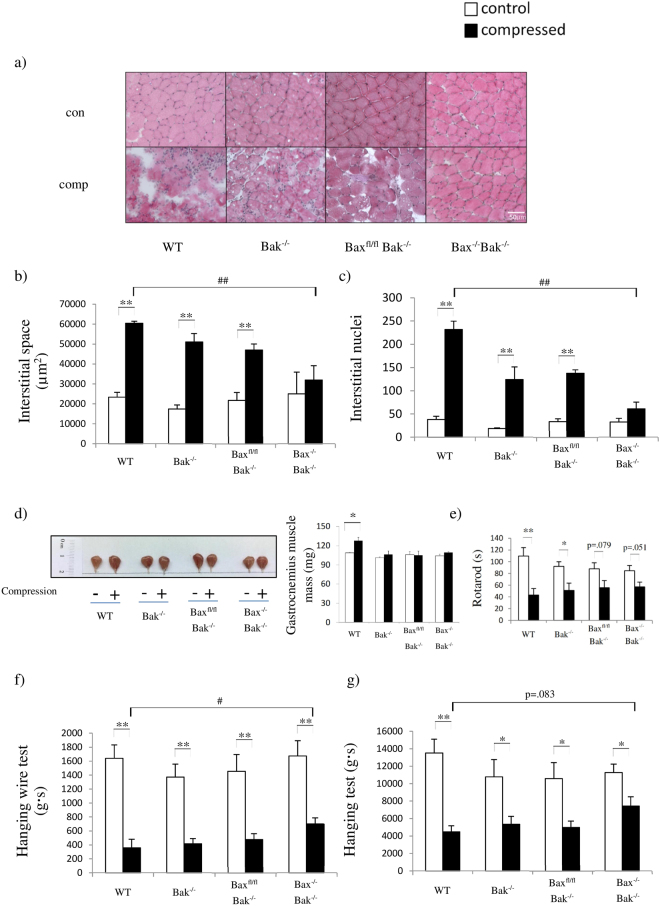Figure 1.
Ablation of Bax and Bak preserves skeletal muscle structural integrity after mechanical compression. (a) Representative images of H&E-stained sections from control (con) and compressed (comp) muscle tissues collected from wild-type (WT), Bak−/−, Baxfl/flBak−/−, and Bax−/−Bak−/− mice. Figures (b) and (c) show the comparison of animals (n = 3 mice/group; WT, Bak−/−, Baxfl/flBak−/−, and Bax−/−Bak−/− mice in this order) for (b) interstitial space, (c) numbers of interstitial nuclei and (d) representative images of control (“−” or clear bars) and compressed (“+” or shaded black bars) muscle tissues. (e) to (g) show the comparison of animals (WT, Bak−/−, Baxfl/flBak−/−, and Bax−/−Bak−/− mice in this order) for (e) rotarod performance (n = 5 mice/group), (f) performance in hanging wire test and (g) performance in hanging test before (clear bars) and after (shaded bars) compression. All values are expressed as means ± standard error of mean. Pairwise comparison was performed with Student’s t-test, *P < 0.05, **P < 0.01. One-way analysis of variance (ANOVA) and Tukey’s post hoc test were used to compare multiple groups, ##P < 0.01.

